Wet wipes flushed down toilets contribute to more than 90% of sewer blockages in the UK. They take many years to break down and when they do, they can be devastating for wildlife.
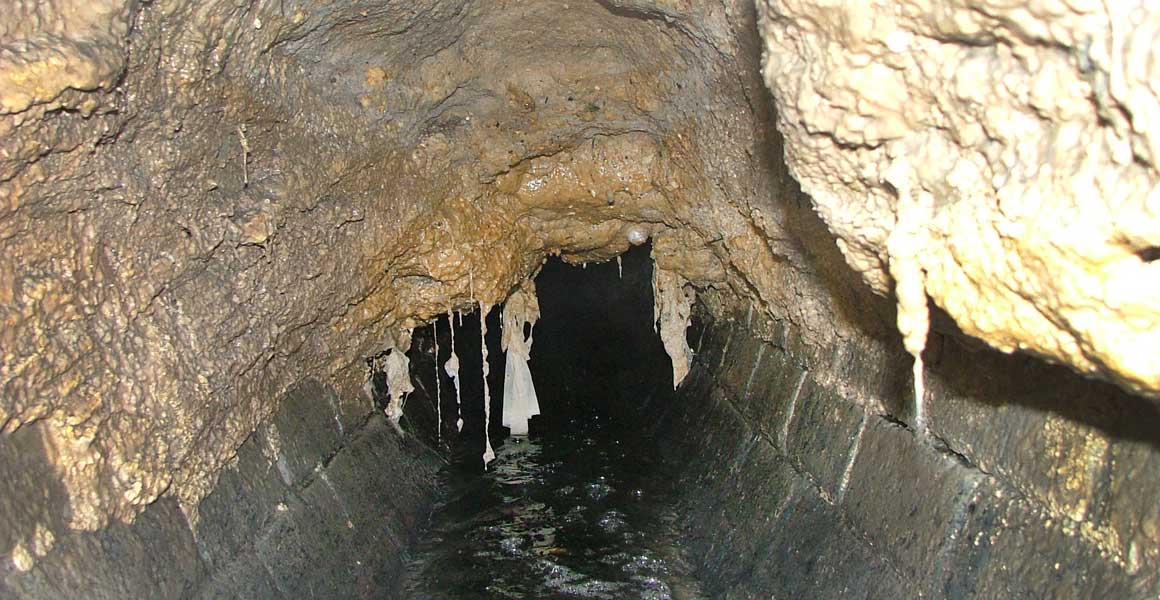
A fatberg is a large mass of solid waste that has accumulated over time in sewers. It usually consists of personal hygiene products and congealed fat that have been flushed down the toilet. © Thames Water/www.thameswater.co.uk
Pollution in the river Thames
In July 2019 alone, 23,000 wet wipes were found on the shore of the River Thames in Barnes, southwest London. This was within two hours of a volunteer clean-up organised by Thames21.
Katy McCoy, a master's student at Royal Holloway, University of London, was one of the volunteers.
Katy is looking into the impacts of plastic pollution in the River Thames, with a focus on how wet wipes are affecting Asian clams (Corbicula fluminea).
'Researching the impacts of wet wipes on the wildlife that live in our rivers is a new subject area,' says Katy. 'I'm keen on finding a solution to our plastic pollution.'
Wet wipes are currently one of the biggest contributors to river pollution, having become a popular alternative to toilet paper since the 90s.
Wet wipes are non-woven materials bonded together using resins, chemicals or high pressure. This prevents them from breaking apart easily when wiping with force, such as when scrubbing a stubborn stain off a table. They are also designed to remain wet and therefore do not break up as easily as toilet paper in water.
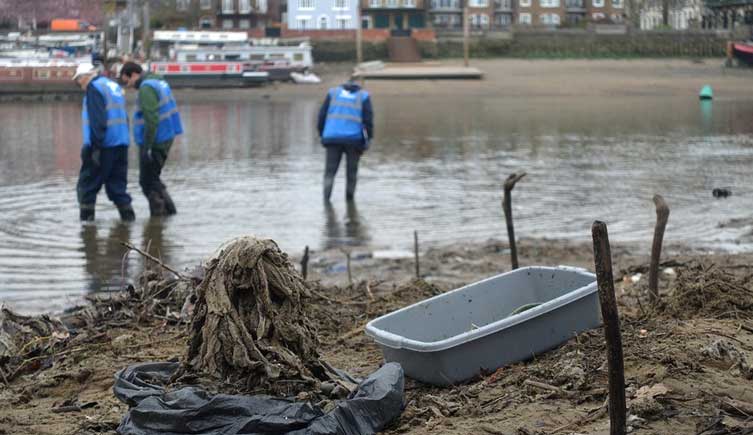
Clean-up of the River Thames, organised by Thames21. A large build-up of sanitary products was also found among the wet wipes. © Thames21/www.thames21.org.uk
What happens to wet wipes when you flush them down the toilet?
Wet wipes have a long journey beyond the toilet bowl. Once flushed, they travel through the drain, where they may get caught in imperfect piping, which can have an irregular shape or small cement drippings. Sometimes they become released without intervention. Other times they accumulate, causing a blockage.
The sewage system in London was designed in the late nineteenth century, when the population in the city was a lot smaller than today, as was the amount of waste produced.
The number of people living in London now is 8.1 million and waste levels are at an all-time high.
'Our sewage system is outdated and can't cope with the amount of waste we produce,' says Katy. 'When there is heavy rainfall, the waste overflows into the rivers. This is how wet wipes end up in our rivers.'
Once in the rivers, wet wipes can get caught on debris and slow down the water around them, creating turbulence. This attracts further wet wipes and other rubbish. As the waste accumulates, the wet wipes form a mound which becomes a new riverbed, eventually changing the shape of the river.
How do wet wipes impact Asian clams in the River Thames?
Katy has found that areas with a higher content of wet wipes have a smaller population of Asian clams.
'As wet wipes build up, they become very heavy,' she explains. 'They weigh down on the sediments, leaving no room for oxygen. This smothering effect makes it inhabitable for the clams.
'If you pull a wet wipe out from the sediments, they can be a metre long. This shows how durable they are. Instead of breaking apart, they just keep stretching.'
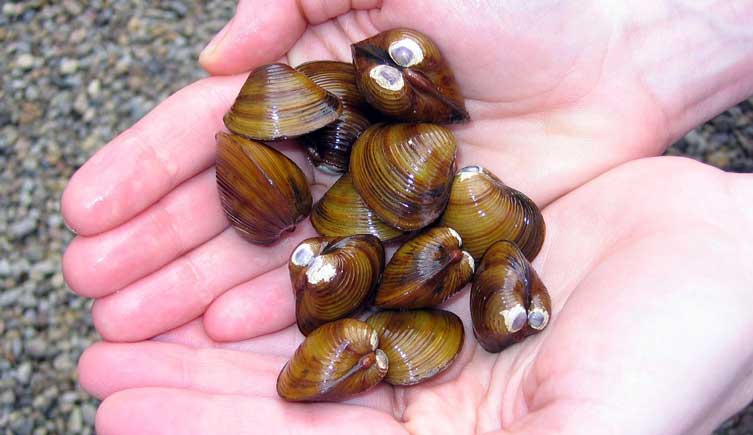
Native to southeast Asia and considered one of the most notorious invasive species, Asian clams arrived in the UK in 1998. They can filter up to a litre of water per hour, increasing water clarity and light penetration, which promotes the growth of other organisms. © Centre for Lakes and Reservoirs/flickr (CC BY-NC 2.0)
Asian clams are also ingesting synthetic fibres such as polyester and polyethylene, both of which are found in wet wipes.
Other research on plastic pollution has repeatedly proven that consumption of plastic is harmful for wildlife. Chemicals are added to plastics during the production stage for aesthetic qualities such as colour, resilience and flexibility. As the plastic breaks up, the chemicals are released.
When consumed by animals, the bigger pieces cause a slow death by suffocation or starvation. Microplastics - plastic pieces that are smaller than five millimetres - get absorbed into the bloodstream, causing blood poisoning, hormone imbalance and reproductive issues.
Katy's research is ongoing, and the effects of plastic ingested by clams are still yet to be learnt.
Which part of London is causing the most pollution?
Summer of 2013 saw a heaving ball of fat gather underneath Kingston upon Thames. Taking three weeks and a high-powered jet to flush it out, it threatened to spew out of all the manholes in the area.
However, the Kingston fatberg was a baby compared to the horror discovered lurking beneath the streets of east London's Whitechapel in 2017. The colossal fatberg weighed an astounding 130 tonnes, garnering the media headlines for months and being compared to the weight of 19 African elephants. It was even put on temporary display at the Museum of London.
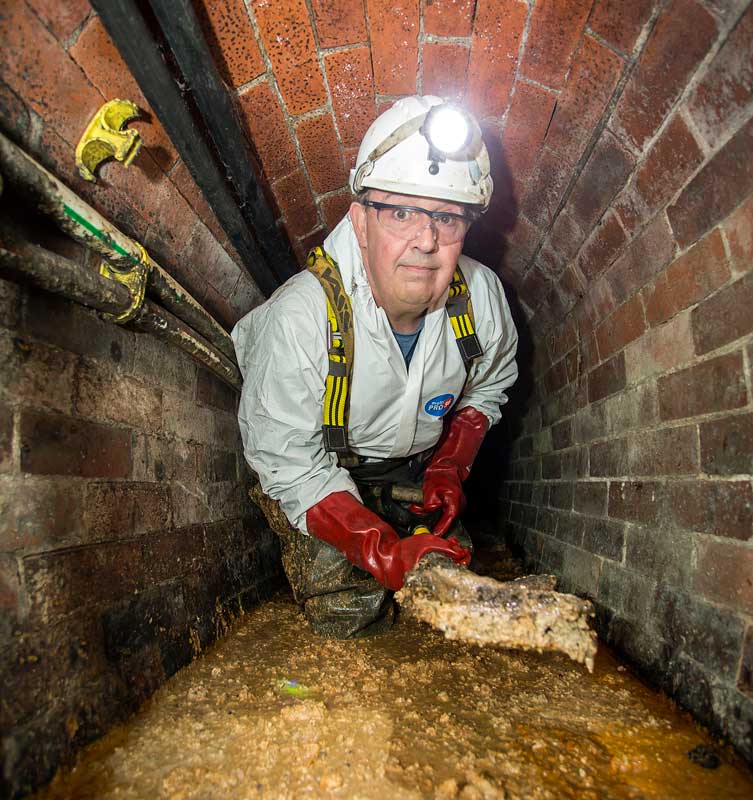
The Whitechapel fatberg took a team of eight people to clean it up over nine weeks. The final few weeks required manual labour using shovels. © Water UK/www.water.org.uk
But the title of worst polluted area has to be the iconic Hammersmith Bridge. During another recent clean-up by Thames21, a staggering 5,453 wipes were found near the bridge, the highest number of wet wipes found in any one place.
'The new "riverbed" can be seen during low tide,' says Katy. 'At first glance, it may look natural, but upon closer inspection, strands of wet wipes can be seen mixed with mud and twigs. When we show people this, they are absolutely shocked.'
What is being done to tackle non-flushable wet wipes?
There is not one regulated standard for wet wipes, which explains the frequent mislabelling.
A lot of the wet wipes sold on the high street follow the European standard of testing. This only focuses on whether it can be flushed down the toilet without causing a household blockage.
It does not consider biodegradability - whether it can be broken down naturally via bacteria and other living organisms, thereby avoiding pollution.
Some wet wipes are labelled as biodegradable, however Katy is sceptical.
'In order for something to biodegrade, it needs to be in an open space at 40 degrees Fahrenheit,' explains Katy. 'Sewages don't provide that environment, so the possibility of wet wipes biodegrading is almost remote, therefore the label is misleading.'
The UK standard of testing is considered a lot more rigorous and includes putting wet wipes through an imitation of the British sewage system. So far, none of the wet wipes sold as flushable has passed.
Although the government agrees that something needs to be done, there has been no official legislation to ensure a positive change. They have left the responsibility to the water companies to initiate collaboration with wet wipes companies.
Water UK has prepared a new series of strict testing methods to determine whether a wet wipe is suitable for flushing through a drain or sewer system. This includes making sure products disintegrate in the drain pipes and sewers and do not contain plastic fibres.
The testing will be carried out by WRc, an independent company that deals with water and sewage.
The wet wipes that pass will have the new 'fine to flush' symbol on the packaging.
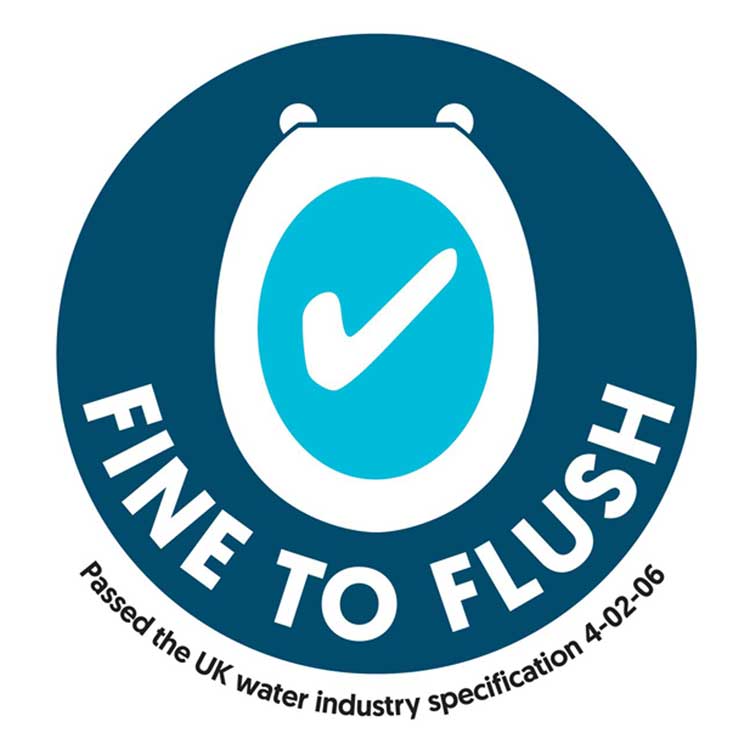
Wet wipes that have passed the British standard of testing will have the new 'fine to flush' logo on them © Water UK/www.water.org.uk
There is also another super sewage being built underneath the current sewage system. Costing £5 billion to build, it will come into effect in 2024.
How can you make a difference?
Most people don't think of wet wipes as plastic. The way wet wipes are perceived needs to change.
Katy thinks the use of wet wipes is a lifestyle and people should stop using them altogether. 'This may be difficult at first but wet wipes were never used before the 1950s, which is proof that it can be done,' she says.
'Parents can use alternative cleaning products such as reusable wipes and nappies. It actually works out cheaper in the long run.
'Some people may argue that you're still adding to your carbon footprint by using water and washing machines to clean the products, but it is impossible to completely remove your carbon footprint.
'Most people will continue using their washing machines. Reusable wipes would be added to a load that was already going to go in the wash. Parents can put reusable wipes into wash-friendly bags that keep clothing items separate. Guppy bags are also great for reducing the shedding of fibre.'
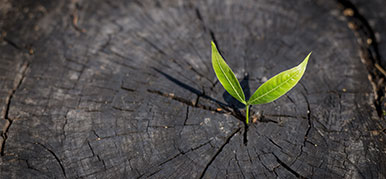
Protecting our planet
We're working towards a future where both people and the planet thrive.
Hear from scientists studying human impact and change in the natural world.

Find Your Climate Action
Taking small, actionable steps can have a big impact when it comes to helping the planet.
Read more
- More on plastic in British rivers by Alex McGoran.
- Help clean your local river with Thames21.
- Read about the latest campaign from Water UK.
Don't miss a thing
Receive email updates about our news, science, exhibitions, events, products, services and fundraising activities. We may occasionally include third-party content from our corporate partners and other museums. We will not share your personal details with these third parties. You must be over the age of 13. Privacy notice.
Follow us on social media